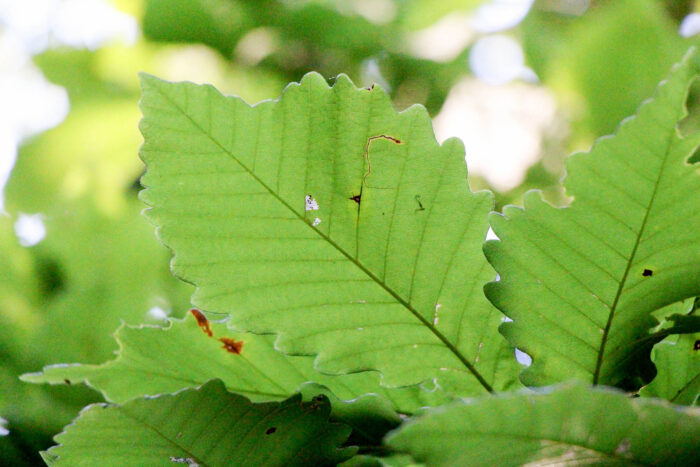Swamp chestnut oak
Quercus michauxii
The swamp chestnut oak is a long-lived and slow growing tree found in floodplains, swamps and forests.
This section shows one large critter image at a time. Use the thumbnails that follow to select a specific image to display here.

This gallery contains a grid of small thumbnails. Selecting a thumbnail will change the main image in the preceding section.
Appearance
Swamp chestnut oaks are tall trees with a narrow crown. When fully grown, the bottom 40 feet of the tree will often not have branches. The bark is light gray and rough. The leaves are shiny dark green on top and grayish-green and fuzzy on the bottom. The leaves turn red in the fall.
Predators
Oaks can suffer from diseases such as oak wilt, chestnut blight, powdery mildew and oak leaf blister. The acorns can also be damaged by acorn weevils and filbert worms. The leaves are sometimes eaten by spongy moths. The acorns are eaten by white-tailed deer and squirrels.
Reproduction and life cycle
Leaves and flowers develop in the spring. Trees won’t produce acorns until they are over 20 years old and begin to produce the most acorns at 40 years old. Trees will produce an abundant crop of acorns every three to five years. Acorns develop in the fall and will begin germinating as soon as they fall. Squirrels bury more acorns than they eat therefore helping new trees to sprout.
Did you know?
- Swamp chestnut oak is a valuable timber tree used for construction.
- Even though it is native to swamps and moist environments, the swamp chestnut oak does well as a street tree. Once it is established, it doesn’t require irrigation.
- The swamp chestnut oak is also known as the “basket oak” because its bark has been used to make baskets and fibers.
- The tree’s other nickname is the “cow oak” because cows will eat the acorns. The acorns are sweet and can be eaten without boiling.
Sources and additional information
- Lady Bird Johnson Wildflower Center - Plant Database: Swamp Chestnut Oak
- USDA Forest Service Southern Research Station - Swamp Chestnut Oak
- University of Delaware - Swamp Chestnut Oak
